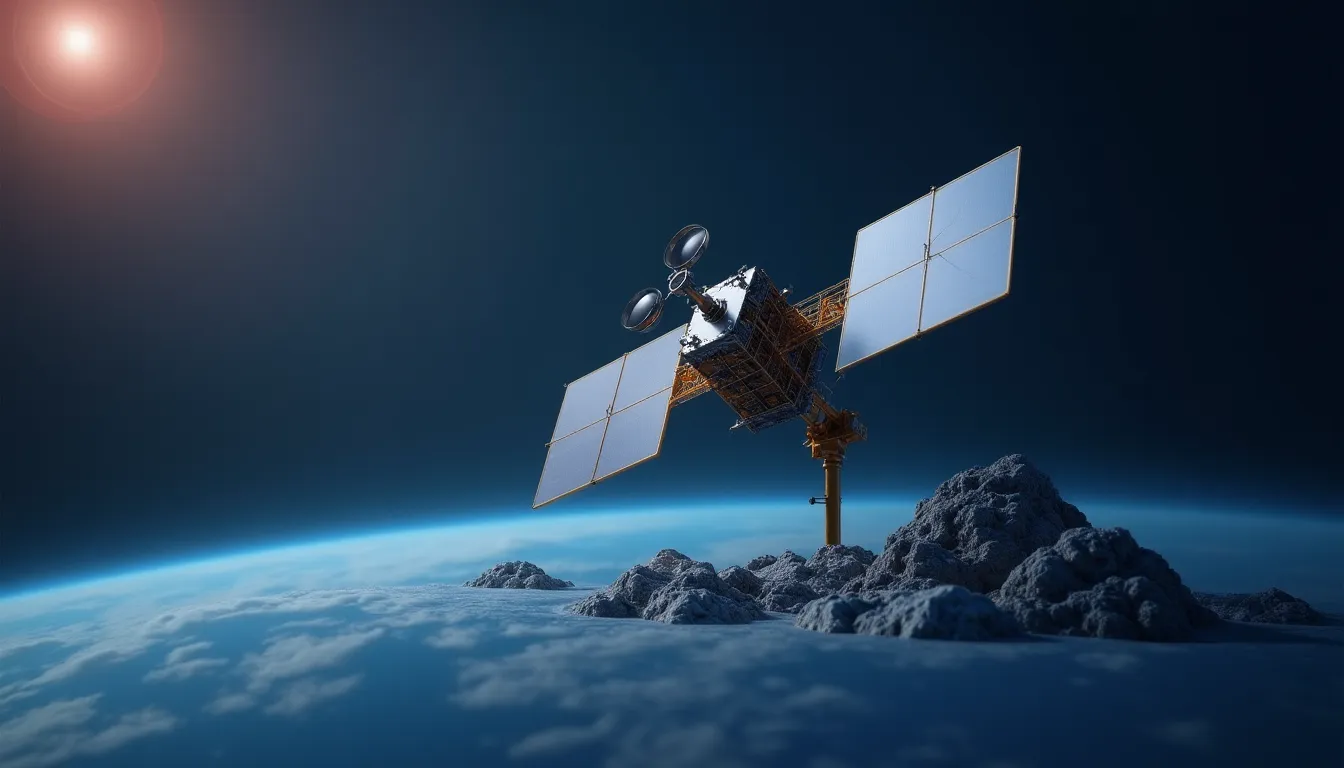In the ever-evolving landscape of aerospace and defense, recent developments showcase significant strides in operational capabilities, technology integration, and system testing. This article delves into the latest advancements that are shaping the industry and enhancing our defense capabilities through innovative solutions.
Advancing Space Situational Awareness: Satellite Deployment by the Space Development Agency
The Space Development Agency (SDA) has taken a pivotal step towards enhancing space situational awareness by launching an initial batch of 21 operational satellites. These satellites, constructed by York Space Systems, were deployed via a SpaceX Falcon 9 rocket from Vandenberg Space Force Base. This launch marks the commencement of a 10-month campaign to deliver over 150 satellites to low Earth orbit (LEO), thereby expanding the capabilities of satellite constellations to monitor and secure U.S. interests in space.
The advanced sensor modules integrated into these satellites are expected to provide comprehensive motion sensing capabilities, critical for responding to potential threats in the increasingly contested domain of outer space.
Strengthening Command and Control: Flight Tests of the E-4C Survivable Airborne Operations Control Aircraft
The U.S. Air Force, in collaboration with Sierra Nevada Corporation, has initiated flight tests for the E-4C Survivable Airborne Operations Control (SAOC) aircraft at the Aviation Innovation and Technology Center in Dayton, Ohio. This next-generation platform is integral to ensuring robust command and control capabilities during critical operations.
By leveraging advanced navigation systems, the E-4C will provide resilient airborne command and control, enhancing operational effectiveness in various scenarios. The integration of precision accelerometers and CMOS imaging series with multi-resolution options ensures superior stability and situational awareness during missions.
E-130J Phoenix II: A Milestone in Strategic Airborne Command Capabilities
In a significant milestone for the U.S. Navy, the first airframe of the E-130J Phoenix II strategic airborne command post has rolled off the production line. This aircraft is a key component of the $3.5 billion TACAMO modernization program, designed to maintain secure communication through airborne command posts.
The E-130J is expected to utilize advanced control systems to ensure reliable communications during operations, thus enhancing the Navy’s strategic response capabilities across multiple theaters.
NASA’s ISS Orbit Adjustment: Precision Maneuvering for Operational Continuity
NASA’s 33rd SpaceX Cargo Dragon mission successfully executed a propulsion maneuver, raising the International Space Station’s orbit by approximately one mile. This maneuver, lasting over five minutes, exemplifies the agency’s commitment to maintaining the ISS’s operational altitude through precise orbital adjustments.
Such adjustments underscore the importance of cutting-edge propulsion technology and the need for reliable systems to ensure continuous operation in low Earth orbit, an area that is becoming increasingly vital for both scientific research and national security endeavors.
Enhancing Defense Capabilities: Integration of Guided Rockets on Eurofighter Typhoon Jets
In a bid to counter emerging threats, BAE Systems is advancing the integration of APKWS II guided rockets on Eurofighter Typhoon jets. This upgrade aims to enhance low-cost counter-unmanned aerial system (C-UAS) capabilities, demonstrating progress through weapon system enhancements.
The integration of these guided munitions will not only improve strike precision but also ensure that the Eurofighter Typhoon remains a formidable asset in modern aerial warfare scenarios.
Autonomous Combat Drones: A Shift Towards AI Integration
The U.S. Air Force has commenced ground testing of autonomous collaborative combat aircraft, specifically the YFQ-44 and YFQ-42, developed by Anduril Industries and General Atomics. This shift towards integrating artificial intelligence and robotics in defense aviation signifies a new era of autonomous operations that could redefine air combat strategies.
These developments highlight the importance of advanced sensor technologies and AI-driven control systems, which are crucial for ensuring effective operation in complex environments.
Advanced Air-Defense Systems: Radar and Missile Development
Raytheon Technologies is currently constructing new AN/SPY-6(V) air-defense radars for late-model Burke-class destroyers, while Lockheed Martin is developing submarine-launched nuclear ballistic missiles equipped with inertial and celestial guidance systems.
These advancements represent a significant leap in defense capabilities, enhancing detection and engagement capabilities through improved sensor technology and sophisticated missile guidance systems.
Additive Manufacturing in Drone Technology: The Future of Propulsion
UK startup Argive has made waves in the drone sector by developing 3D-printed microturbine engines capable of powering small to medium uncrewed aircraft. This push into additive manufacturing techniques highlights the potential for innovation in drone propulsion technology, offering lightweight and efficient power solutions for various applications, including loitering munitions.
Conclusion
As the aerospace and defense sectors continue to evolve, the integration of advanced technologies plays a critical role in enhancing operational capabilities and maintaining strategic advantages. From satellite deployments to autonomous systems and advanced missile technologies, these developments signify a commitment to ensuring readiness and resilience in an ever-changing global landscape. The future will likely bring further innovations, reinforcing the importance of staying ahead in the race for technological superiority.
References
-
Defense News Aerospace 2025 - Army Recognition (armyrecognition.com) - 9/16/2025 Japan’s Ministry of Defense said on 12 September that it will send Air Self-Defense Force fighter jets to Europe and Canada for the first time. The… Read more …
-
Military Aerospace: Home (www.militaryaerospace.com) - 9/16/2025 Army taps Lockheed Martin for missile launchers with GPS-aided inertial navigation and proximity sensors · John Keller. Sept. 10, 2025.
-
The Week In Technology, Sept. 15-19, 2025 (aviationweek.com) - 9/16/2025 The Week In Technology, Sept. 15-19, 2025 is available to both Aviation Week & Space Technology and AWIN subscribers. Subscribe now to read this …
-
Taiwan, Shield AI Launch Defense Technology Collaboration (thedefensepost.com) - 9/16/2025 Shield AI has partnered with Taiwan’s Aerospace Industrial Development Corporation to advance defense innovation.
-
31st Annual Aerospace & Defense Symposium - Gabelli Funds (gabelli.com) - 9/9/2025 Gabelli Funds will host its 31st Annual Aerospace & Defense Symposium on Thursday, September 4, 2025, in Midtown Manhattan, New York City.
-
September 2025 Archives - AIAA - Shaping the future of aerospace (aiaa.org) - 9/3/2025 Tag: September 2025 · Electric Air Taxis Expected to Reach Operational Scale by 2028 Olympic Games in Los Angeles · To Succeed, Space Startups …
-
Drones, AI and robotics challenge order of Top 100 defense firms (www.defensenews.com) - 9/2/2025 Drones, AI and robotics challenge order of Top 100 defense firms. By Stephen Losey. Tuesday, Sep 2, 2025.
-
The Week In Technology, Sept. 1-5, 2025 (aviationweek.com) - 9/2/2025 The Week In Technology, Sept. 1-5, 2025 is available to both Aviation Week & Space Technology and AWIN subscribers. Subscribe now to read this …



